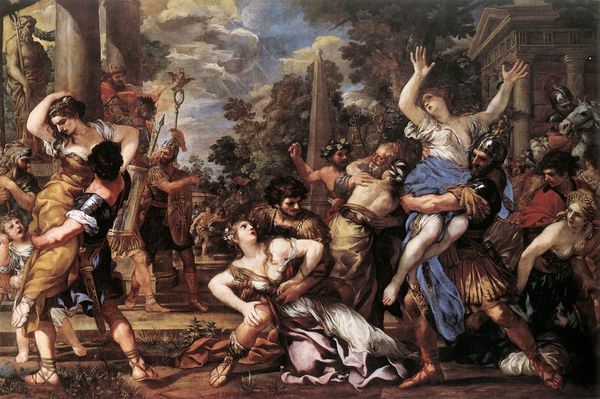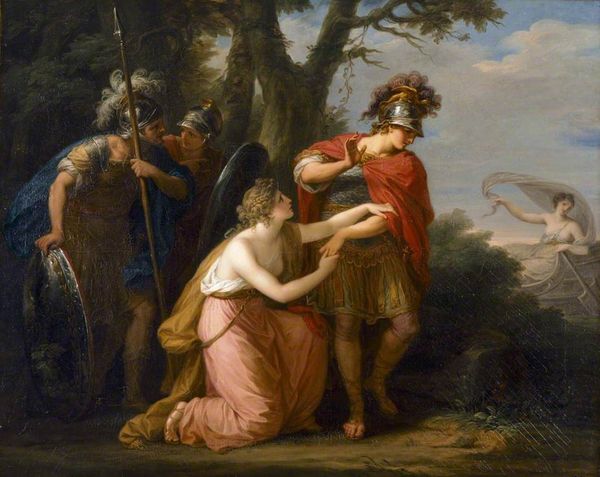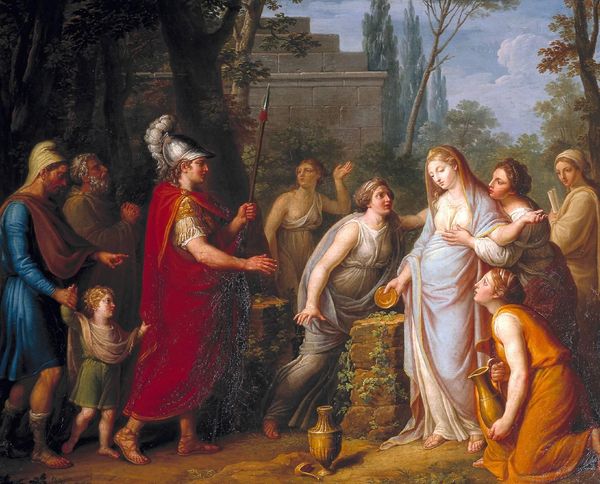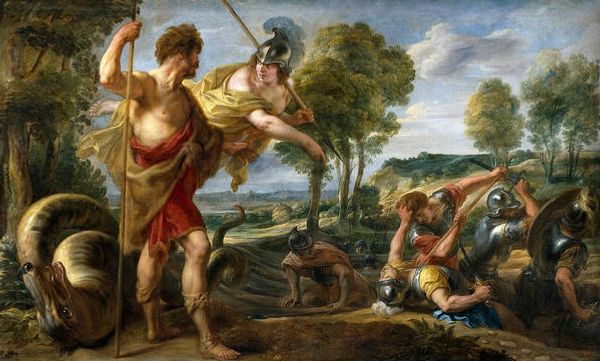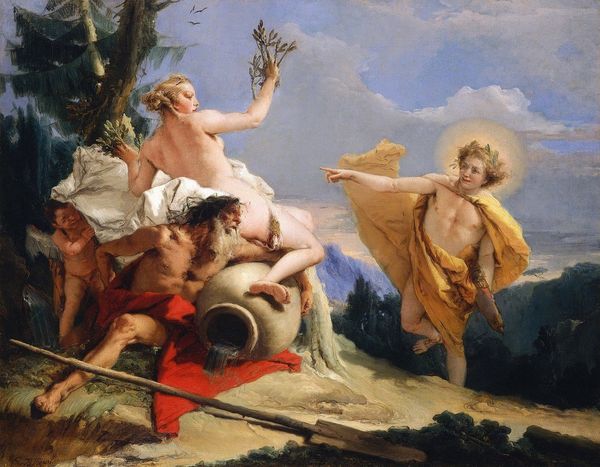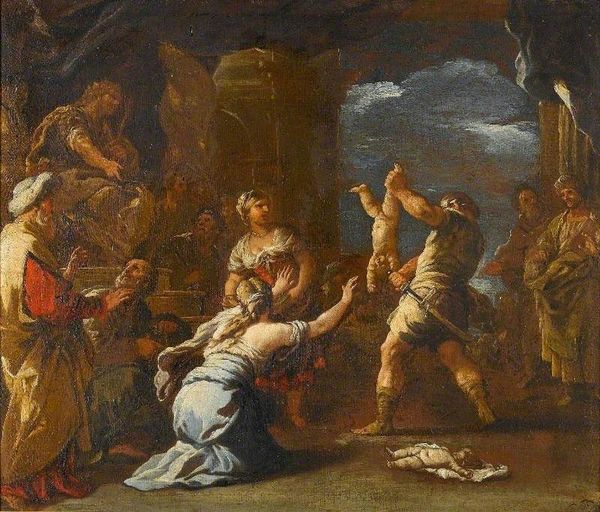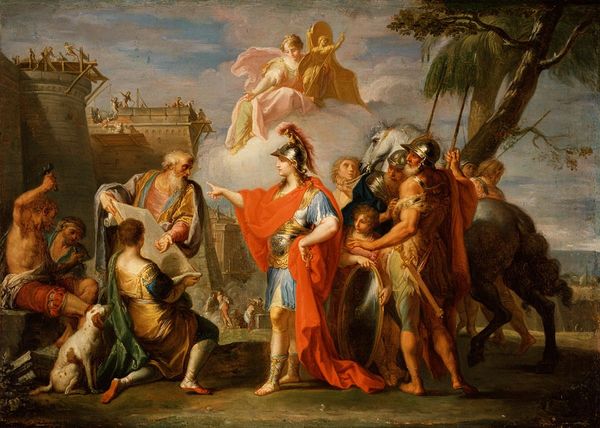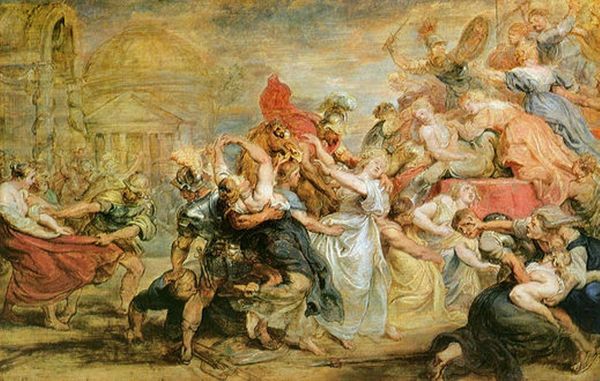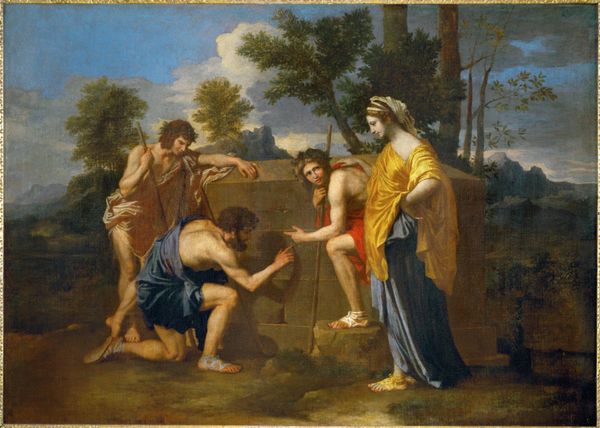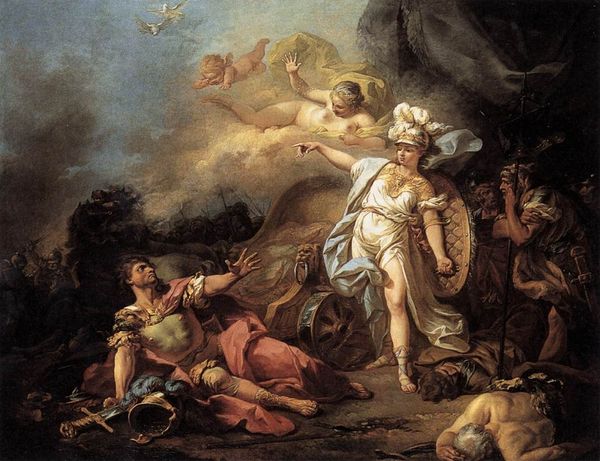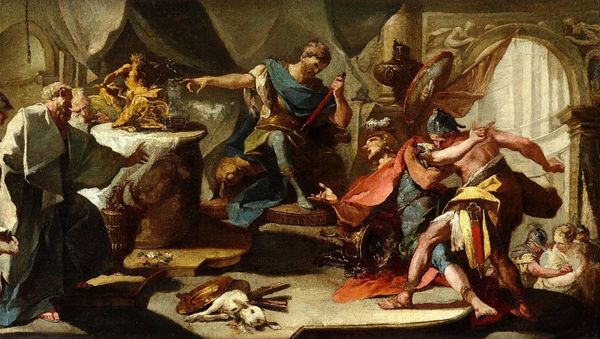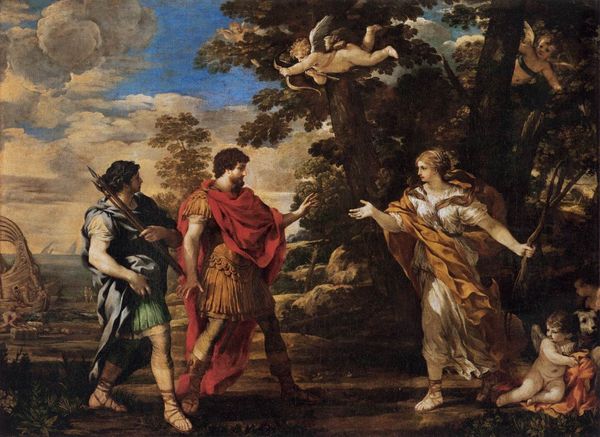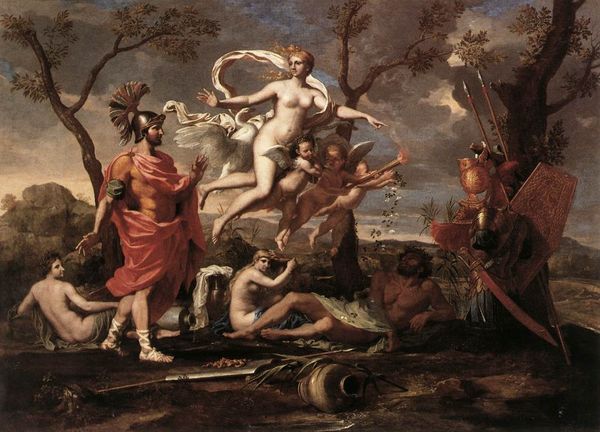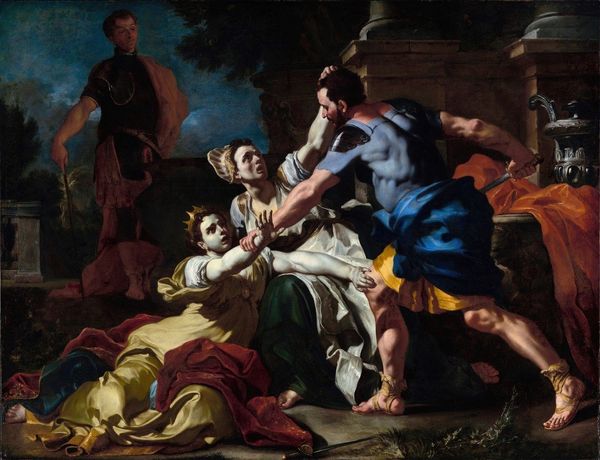
#
gouache
#
acrylic
#
abstract painting
#
possibly oil pastel
#
oil painting
#
acrylic on canvas
#
underpainting
#
mythology
#
painting painterly
#
surrealist
#
fine art portrait
Copyright: Public domain
Curator: I find this tableau remarkably theatrical, wouldn’t you agree? The emotional tenor is quite heightened. Editor: Very much so. Before us hangs Orest Kiprensky's “Dmitry Donskoy after the Battle of Kulikovo,” executed in 1805, and now residing in the Russian Museum. Looking at it, I'm struck by how raw and tactile the figures feel, even with that grand historical sweep. The reds and greens, seemingly oil paints, jump out so vividly. Curator: Indeed. Red often signifies courage, sacrifice, royalty even, while green perhaps speaks of hope, or even renewal following conflict. The composition centers around Dmitry, but see how those surrounding him either support, grieve, or gaze upwards, almost seeking divine reassurance. The sky hints at tumultuous change. Editor: What gets me going is seeing these historical epics and just imagining the process. The physical labor! Transporting those pigments, mixing them, grinding them, applying layer upon layer to build up these figures... Did Kiprensky have apprentices, one wonders? The economics of running a studio back then… Curator: That focus brings interesting perspectives to bear on national identity, in a way. Kiprenky’s work aimed to contribute to Russia's burgeoning national self-image in the wake of the Napoleonic wars. Dmitry's figure stands as a beacon of resistance and faith; that single detail holds weight for the collective consciousness of the time. He becomes an allegorical representation of resilience, not just a historical individual. Editor: But was it necessarily a single unified image everyone embraced? It’s so easy now to project backwards that sense of collective memory, when, I imagine, reactions were much more… splintered. Who was consuming this imagery, and who had access to it, right? Not necessarily reflective of the majority. Still, considering the available materials, the scale, and presumably commissions, this would’ve been an intensely time-consuming enterprise. Curator: Indeed. Yet by synthesizing Classical form with emotive, Romantic drama, Kiprensky contributed in tangible ways to cementing cultural narratives and shared understandings of Russian identity— regardless of consumption or immediate responses. And so the visual memory perpetuates. Editor: That it does. Now, having dwelt on those pigments and that labor, it casts a rather new light on how such cultural images get literally hammered into being.
Comments
No comments
Be the first to comment and join the conversation on the ultimate creative platform.
